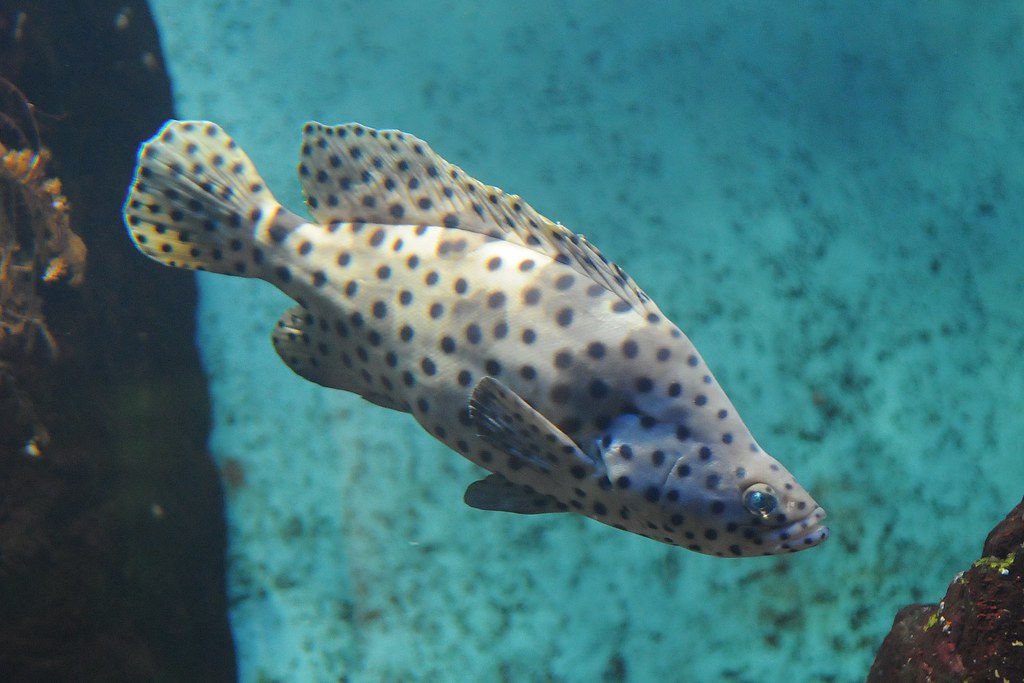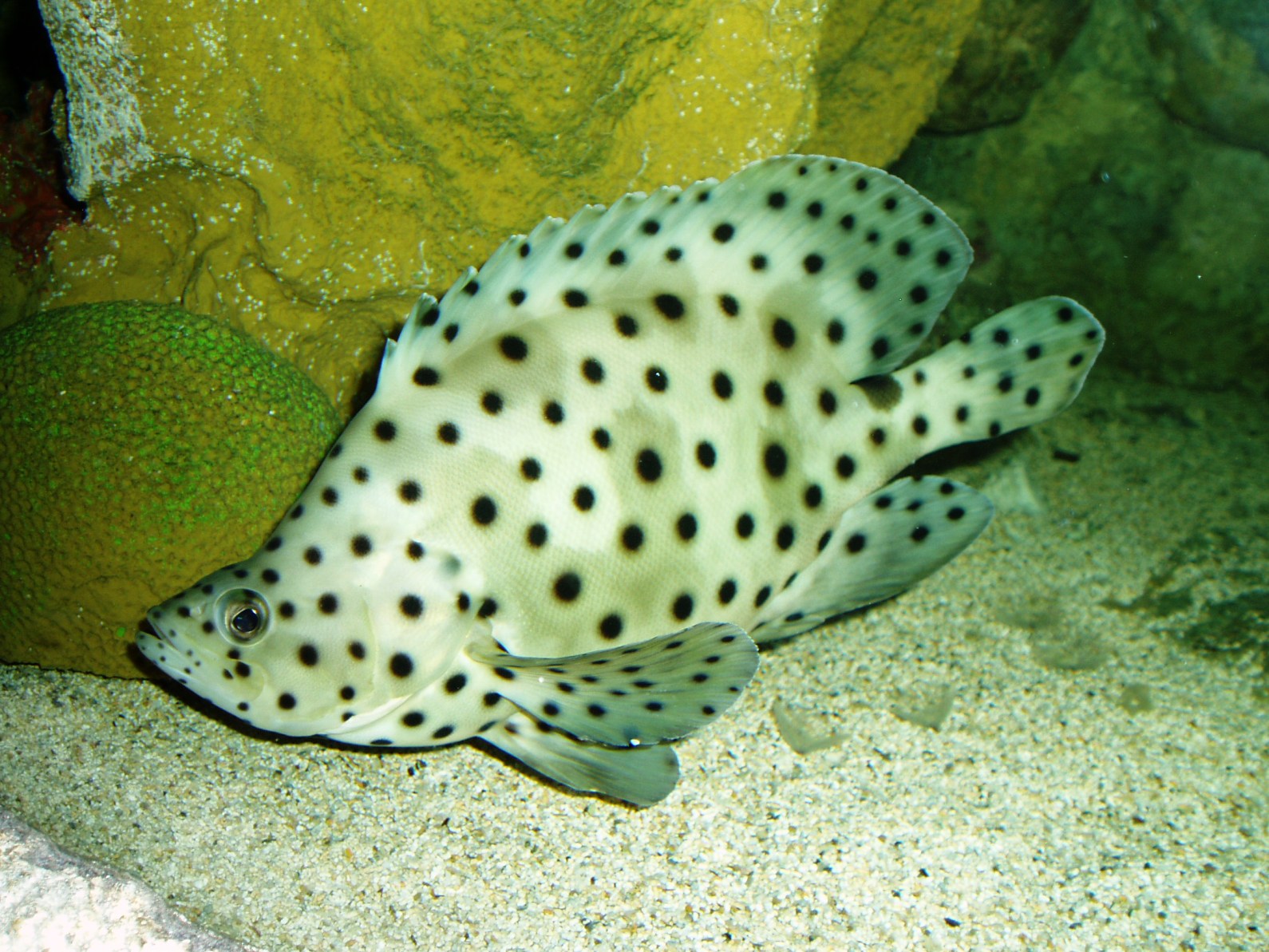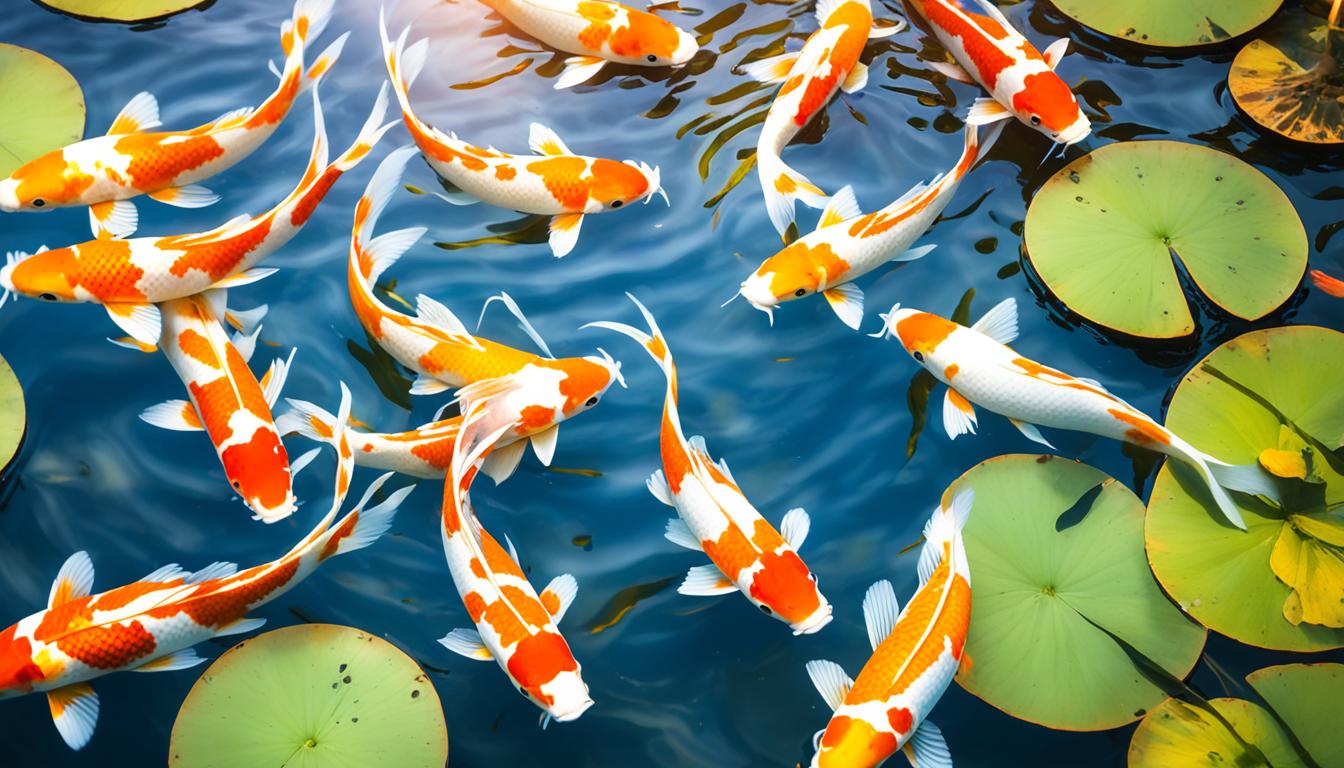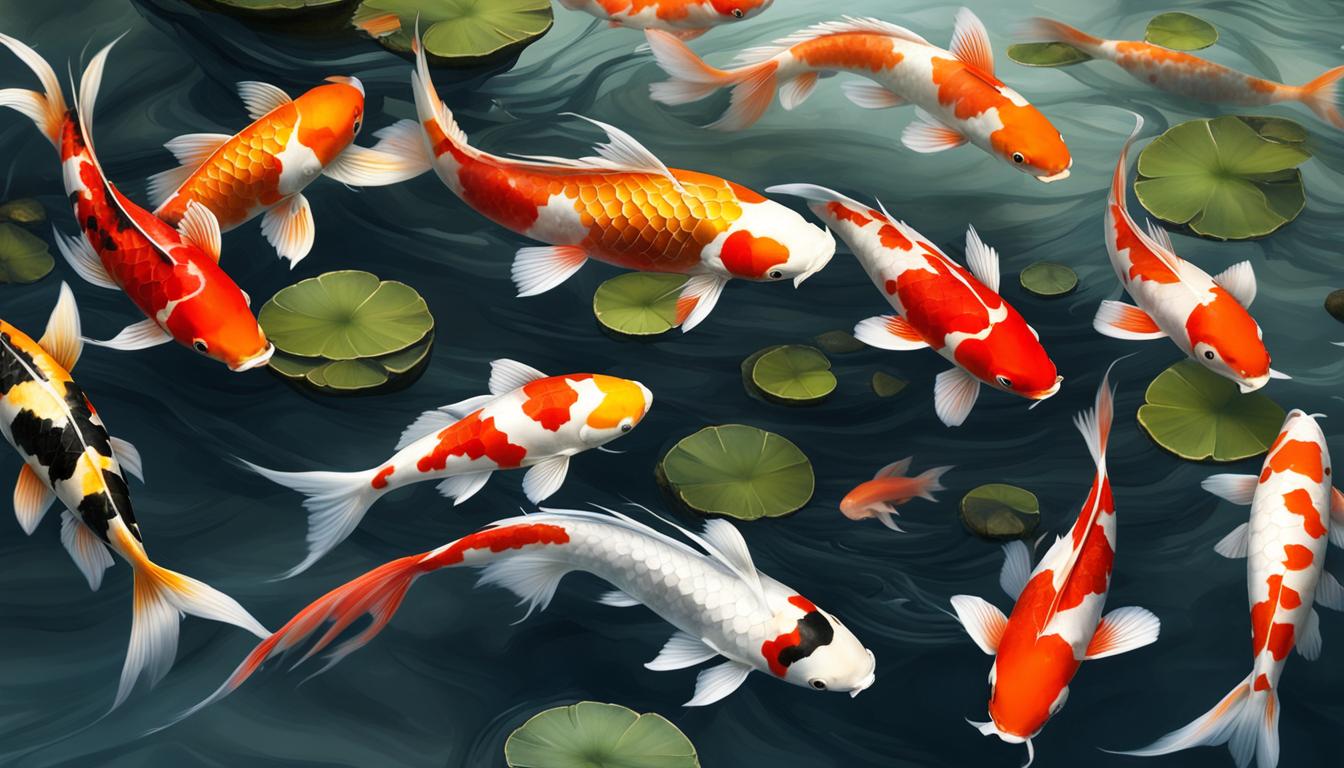Panther groupers can grow up to 28 inches in size. They require a large tank for proper care and need to be kept in reef-safe environments.
Panther groupers are a popular choice for saltwater fish enthusiasts due to their stunning appearance and unique characteristics. These groupers, scientifically known as Cromileptes altivelis, can reach impressive sizes, with adult specimens growing up to 28 inches in length. Keeping a Panther grouper requires a tank of adequate size and specific tank conditions to ensure their well-being.
It is important to create a reef-safe environment for them, as certain tank mates may not be compatible with them. In this comprehensive guide, we will delve into the various aspects of Panther grouper care, including their appearance, habitat requirements, and proper tank conditions. Additionally, we will explore their growth rate and discuss some essential considerations for keeping these magnificent fish.
Table of Contents
Understanding The Growth Potential Of Panther Groupers
Understanding the growth potential of Panther Groupers is crucial for fish enthusiasts. These impressive creatures can reach a size of up to 28 inches, requiring a spacious tank and careful consideration of tank mates. With proper care and monitoring, these groupers can grow into magnificent specimens.
Panther Groupers: A Majestic Species Unraveled
Discovering the fascinating growth journey of Panther groupers.
- Panther groupers can grow to be quite large, reaching impressive sizes.
- On average, these majestic creatures can grow up to 28 inches long.
- They require a spacious tank with plenty of swimming room to accommodate their size.
- Panther groupers are known for their vibrant colors and intricate patterns. Their striking appearance only enhances their magnificence.
- These groupers can live for several years, making them a long-term commitment for fish enthusiasts.
- It is important to provide proper care and maintain suitable tank conditions to ensure their healthy growth.
- Panther groupers are not reef safe, as they may eat smaller fish or invertebrates within the tank. It is essential to select tankmates carefully.
- Due to their potential size and dietary requirements, a varied and nutritious diet is necessary to support their growth.
- These groupers thrive in a marine environment with appropriate water parameters, including temperature, salinity, and pH levels.
- Panther groupers are truly awe-inspiring creatures that add grace and beauty to any aquarium setting.
Understanding the growth potential of Panther groupers is essential for their proper care and wellbeing. These majestic fish can grow to be quite large and require a spacious tank to accommodate their size. By providing the right conditions, diet, and care, aquarium enthusiasts can witness these groupers reaching their full potential and enjoy their striking beauty for years to come.
Factors Affecting The Size Of Panther Groupers
The size of Panther Groupers can be influenced by various factors, including genetics, habitat, and feeding habits. Additionally, the size of the tank they are kept in can also impact their growth potential.
The size of Panther Groupers can be influenced by various factors, including environmental factors, nutrition and diet, as well as tank size and conditions. Understanding these factors is crucial for ensuring the optimal growth and development of these magnificent fish.
Let’s take a closer look at each of these factors:
Environmental Factors: Unraveling The Impact On Size
- Water temperature: Panther Groupers thrive in tropical waters with temperatures ranging from 74°F to 82°F. Exposure to extreme temperatures can negatively affect their growth.
- Water quality: Maintaining excellent water quality is essential for the health and development of Panther Groupers. Proper filtration, regular water changes, and monitoring pH levels are crucial.
- Oxygen levels: Sufficient oxygen levels are necessary for the growth of Panther Groupers. Adequate aeration and circulation in the tank are important to ensure their well-being.
Nutrition And Diet: Fueling Growth And Development
- Balanced diet: Panther Groupers are carnivorous and require a diet rich in protein. A well-balanced diet should consist of high-quality pellets, live or frozen meaty foods, and occasional treats like shrimp or squid.
- Feeding frequency: Panther Groupers should be fed smaller meals multiple times a day to mimic their natural feeding habits. Overfeeding should be avoided to prevent the risk of obesity and related health issues.
- Vitamin and mineral supplements: Providing necessary supplements, such as calcium and vitamins, can enhance the growth and overall health of Panther Groupers.
Tank Size And Conditions: Creating The Ideal Habitat
- Tank size: Panther Groupers require a spacious tank to accommodate their large size. A minimum tank size of 75 gallons is recommended for juveniles, whereas adults may require tanks exceeding 150 gallons.
- Hiding spots: Providing ample hiding spots, such as caves or rock formations, gives Panther Groupers a sense of security and allows them to establish their territory.
- Tank mates: Carefully selecting compatible tank mates is crucial to avoid aggression and territorial conflicts. Peaceful and non-aggressive species are ideal companions for Panther Groupers.
By understanding and catering to these factors affecting the size of Panther Groupers, you can ensure their optimal growth, development, and overall well-being in your aquarium. Remember, creating a suitable environment and providing a nutritious diet are key to maintaining healthy and vibrant Panther Groupers.
How Panther Groupers Grow: From Juveniles To Mature Adults
Panther groupers undergo significant growth from juveniles to mature adults, with their size increasing substantially. As they develop, Panther groupers can reach impressive lengths, making them a fascinating species to observe.
Early Life Stages: Exploring The Growth Milestones:
- Panther groupers start their lives as tiny fry, measuring less than an inch long.
- As juveniles, they exhibit rapid growth, increasing in size at an impressive rate.
- During this stage, they go through various growth milestones, from reaching a few inches in length to becoming mature adults.
- It is fascinating to observe how these groupers transform over time, both in terms of size and appearance.
Understanding The Growth Rate Of Panther Groupers:
- Panther groupers have a relatively fast growth rate, especially during their early life stages.
- As juveniles, they can grow up to several inches within a short period.
- However, their growth slows down as they reach maturity, and they continue to grow at a much slower rate throughout their adult lives.
- Understanding the growth rate of Panther groupers is crucial for proper care and management of these fascinating creatures.
Factors Contributing To Accelerated Growth In Panther Groupers:
- Proper nutrition: Providing a well-balanced diet plays a significant role in promoting accelerated growth in Panther groupers.
- Optimal tank conditions: Maintaining appropriate water parameters, such as temperature and salinity, creates an ideal environment for healthy growth.
- Sufficient space: Panther groupers require a spacious tank to swim and grow comfortably. Providing ample space allows them to thrive and reach their maximum potential size.
- Genetics: Like any other living organism, genetics also play a crucial role in determining the growth potential of Panther groupers.
- Age and health: Younger, healthier groupers tend to exhibit faster growth compared to older individuals with underlying health issues.
The growth journey of Panther groupers, from juveniles to mature adults, is an intriguing process. Understanding the milestones, growth rate, and factors contributing to accelerated growth in these groupers is essential in providing the right care for them. By ensuring proper nutrition, optimal tank conditions, sufficient space, and considering genetics and health factors, enthusiasts can help Panther groupers reach their maximum potential size.

Achieving Optimal Growth For Panther Groupers
Achieving optimal growth for Panther Groupers requires considering their size. Understanding the size requirements for tank mates, tank size, and their full-grown potential is crucial for their care and overall well-being.
Best Practices For Feeding Panther Groupers:
- Feed Panther groupers a balanced diet consisting of a variety of meaty foods such as shrimp, squid, and fish.
- Offer small, frequent meals throughout the day rather than one large feeding to mimic their natural feeding behavior.
- Monitor their appetite and adjust the feeding quantity accordingly to prevent overfeeding.
- Consider supplementing their diet with vitamin and mineral supplements to ensure proper nutrition.
- Avoid feeding them live fish as it may introduce diseases and parasites to the tank.
Maintaining Optimal Tank Conditions For Growth:
- Provide a spacious tank with a minimum capacity of 100 gallons to accommodate the Panther grouper’s size and swimming habits.
- Maintain stable water parameters, including a temperature range of 75-82°F, pH level between 8.1-8.4, and salinity around 1.020-1.025.
- Install a high-quality filtration system to ensure good water quality and minimize the accumulation of waste.
- Provide plenty of hiding spots and caves as Panther groupers are nocturnal and enjoy having secure places to rest.
- Regularly monitor water parameters, conduct water changes, and clean the tank to minimize stress and maintain optimal tank conditions.
Techniques For Promoting Healthy And Vigorous Growth:
- Perform regular health checks to identify any potential issues early on. Look out for signs of stress, disease, or parasites.
- Ensure proper lighting conditions by providing a balance of natural and artificial light, mimicking the grouper’s natural environment.
- Maintain a consistent feeding schedule and ensure that all tankmates are receiving appropriate nutrition as well.
- Create a well-structured and diverse tank environment with live rocks and corals to mimic the grouper’s natural habitat.
- Avoid overcrowding the tank to prevent competition for resources and territorial disputes among the Panther groupers and other tankmates.
By following these best practices, maintaining optimal tank conditions, and implementing techniques to promote healthy growth, you can ensure the well-being and optimal growth of your Panther groupers. Remember to regularly monitor their behavior, water parameters, and diet to address any issues promptly and provide the best care possible for these amazing fish.
Common Misconceptions About Panther Grouper Size
Misconceptions about the size of Panther Groupers are common. Many people believe they grow to be much larger than they actually do, with some thinking they can reach sizes exceeding 3 feet. In reality, these fish typically grow to be around 1-2 feet in length.
Debunking Myths About Stunted Growth In Panther Groupers:
Panther groupers are fascinating creatures that captivate the attention of many aquarium enthusiasts. However, there are some common misconceptions about the size of these groupers. Let’s debunk these myths and shed some light on the truth behind their growth potential.
- Myth 1: Panther groupers have stunted growth in captivity:
- Panther groupers can indeed reach large sizes in captivity if provided with suitable conditions.
- Lack of proper care, nutrition, and a suitable environment can hinder their growth.
- Myth 2: Panther groupers cannot outgrow their tank:
- Panther groupers have tremendous genetic potential for growth and can easily outgrow smaller tanks.
- It is crucial to provide them with adequate space to swim and grow comfortably.
- Myth 3: Panther groupers can be kept in small aquariums:
- Panther groupers require significantly larger tanks due to their potential size.
- A minimum tank size of 180 gallons is recommended for young groupers, with larger tanks needed as they grow.
- Myth 4: Panther groupers do not require a spacious environment:
- Creating ample swimming space and providing ample hiding spots are essential for Panther groupers’ physical and mental well-being.
- Offering a suitable environment ensures their growth is not stunted.
- Myth 5: Stunted growth is normal for Panther groupers:
- Panther groupers have the genetic potential to grow large, making stunted growth a sign of inadequate care or unsuitable living conditions.
- Proper nutrition, water quality, and a spacious living environment are crucial for their healthy growth.
Understanding the genetic potential of Panther groupers is essential for providing them with the care they deserve. By debunking these common misconceptions, we can ensure these magnificent creatures thrive and reach their full size in captivity.
Ensuring The Longevity Of Panther Groupers
Panther Groupers can grow to be quite large in captivity, reaching lengths of up to 28 inches. It is important to provide them with a suitable tank size and proper care to ensure their longevity and well-being.
Maximizing The Lifespan Of Panther Groupers Through Proper Care:
- Provide a suitable tank size: Panther groupers require a spacious tank to thrive, ideally around 180 gallons or larger. This allows them to swim freely and reduces stress.
- Maintain water quality: Regular water changes and proper filtration are essential for Panther groupers. Keep ammonia, nitrate, and nitrite levels low to ensure optimal health.
- Feed a balanced diet: Panther groupers are carnivorous, so a diet rich in meaty foods such as shrimp, squid, and fish is crucial. Supplement their diet with vitamin-enriched pellets to ensure proper nutrition.
- Avoid overfeeding: Overfeeding can lead to obesity and health issues. Feed Panther groupers small portions multiple times a day, monitoring their intake closely.
- Provide hiding spots: Panther groupers are naturally solitary and need hiding spots to feel secure. Incorporate rock structures or caves in the tank to offer them a sense of security.
- Maintain proper lighting: Provide a suitable lighting schedule for Panther groupers, simulating their natural habitat. They require both light and dark periods to regulate their biological rhythms.
- Monitor tankmates: While Panther groupers generally tolerate other fish, they may eat smaller tankmates. Avoid keeping them with small, delicate fish to prevent conflicts.
- Regular tank maintenance: Perform regular tank maintenance, including cleaning the tank, testing water parameters, and maintaining proper water temperature, to prevent health issues.
- Seek professional guidance: If you’re unsure about the care requirements of Panther groupers, consult with a professional or an experienced aquarist to ensure you provide them with the best possible care.
- Observe and monitor behavior: Regularly observe your Panther grouper’s behavior for any signs of distress, illness or unusual behavior. Promptly address any concerns and seek veterinary care if necessary.
Beyond Size: Exploring The Beauty Of Panther Groupers
Explore the captivating beauty of Panther Groupers beyond their size. Discover the stunning appearance, tank conditions, and care required for these marvelous creatures.
Appreciating The Unique Characteristics And Beauty Of Panther Groupers:
- Panther groupers are known for their striking appearance and unique characteristics. Here are some aspects that make them truly remarkable:
- Distinctive coloration: Panther groupers boast a mesmerizing combination of black, dark brown, and orange patterns. These colors create a stunning contrast that sets them apart from other fish.
- Intricate patterns: The intricate patterns on Panther groupers’ bodies resemble a panther’s coat, hence their name. These patterns not only add to their visual appeal but also serve as a means of camouflage, allowing them to blend seamlessly into their surroundings.
- Imposing size: Panther groupers can grow up to an impressive size, reaching lengths of up to 28 inches. Their large size adds to their allure and makes them a commanding presence in any aquarium.
- Powerful physique: These groupers possess a robust and muscular build, with a large mouth and sharp teeth. This physique is not only essential for their predatory nature but also contributes to their overall aesthetic appeal.
The Importance Of Preserving The Natural Habitat Of Panther Groupers:
- Preserving the natural habitat of Panther groupers is crucial for several reasons. Here are some key points to consider:
- Biodiversity conservation: Panther groupers are an integral part of the marine ecosystem. By preserving their natural habitat, we ensure the preservation of the overall biodiversity in the area, as these groupers play a vital role in maintaining the balance of the ecosystem.
- Protection of endangered species: Panther groupers are classified as a vulnerable species by the IUCN Red List. By protecting their natural habitat, we contribute to the conservation efforts aimed at preserving this species and preventing its further decline.
- Sustainable fishing practices: Preserving the natural habitat of Panther groupers helps in promoting sustainable fishing practices. By implementing measures such as marine protected areas and fishing quotas, we can ensure the long-term viability of Panther grouper populations while also supporting the livelihoods of local communities.
- Ecotourism potential: Panther groupers, with their awe-inspiring appearance, can attract eco-tourists interested in observing these magnificent creatures in their natural habitat. By preserving their habitat, we create opportunities for sustainable tourism that benefits both the local economy and the conservation efforts.
Appreciating the unique characteristics and beauty of Panther groupers allows us to understand their role in the ecosystem and the importance of preserving their natural habitat. By taking steps to protect their habitat, we contribute to their conservation and ensure the long-term survival of this remarkable species.
Frequently Asked Questions Of Panther Grouper Size
How Big Do Panther Groupers Get?
Panther groupers can grow up to 28 inches in length. They require a large tank and are not suitable for reef tanks.
How Big Do Panther Groupers Get In Captivity?
Panther groupers can grow up to 28 inches in size when kept in captivity.
What Size Tank Do You Need For A Panther Grouper?
The Panther Grouper requires a tank size of at least 75 gallons.
Are Panther Groupers Reef Safe?
Panther groupers are not reef safe.
Conclusion
The size of a Panther Grouper can vary depending on various factors. In captivity, Panther Groupers can reach a length of about 28 inches. However, it’s important to note that their growth rate can be relatively slow. When it comes to tank size, Panther Groupers require a spacious environment to thrive.
A minimum tank size of 180 gallons is recommended to provide them with ample space to swim freely. It’s also crucial to consider the tank mates carefully, as Panther Groupers can be aggressive towards smaller fish. To ensure the best care for your Panther Grouper, it’s important to maintain optimal tank conditions, including appropriate water parameters, filtration, and frequent water changes.
Additionally, a balanced diet consisting of a variety of meaty foods will help support their health and growth. Understanding the size requirements of Panther Groupers is essential for their proper care. By providing them with a suitable tank size, compatible tank mates, and a nutritious diet, you can ensure a healthy and thriving Panther Grouper in your aquarium.
I am a passionate aquarist with over 30 years of hands-on experience in fishkeeping. My journey began at a young age, collecting fish from the wild and learning through experimentation. Specializing in tropical fish, I bring a deep understanding of the hobby to FishKeepingMadeSimple. The site provides honest, detailed reviews of essential products and accessories to help fellow enthusiasts create the best environments for their fish.









